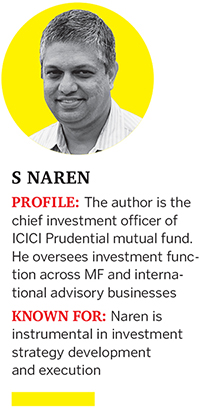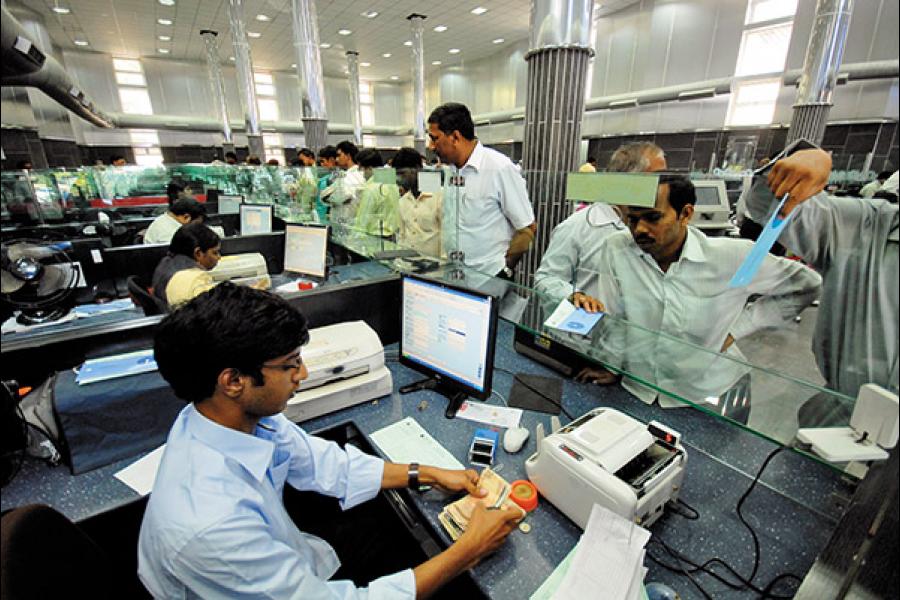
S Naren: Industrial Growth Must Not Stay Subdued
2014 elections will be key as the markets cannot afford a government that is not pro-growth
The general election results will be crucial in defining 2014. While the outcome of this event is unknown, what is certain is that it will play a significant role for the markets.
We are looking for a government that is focussed on growth, lower inflation and better governance. If we find a government at the centre that is not pro-growth, it may dampen market sentiments. In such a situation, while we may see specific sector bets outperforming, the market as a whole may not have many winners and volatility could persist. We cannot afford a situation where industrial growth continues to remain subdued for an extended period of time.

Our belief is that we will achieve those numbers. Based on this logic, we started two close-ended funds post August, which collected approximately Rs 1,040 crore. The foundation of these launches was our belief that, on a three-year growth basis, there will be a recovery in the cyclical sectors of the economy. Given our analysis, we believe that in the next three years, industrial production growth will normalise at 6 to 8 percent. Hence, we will have underweight defensive sectors in our value fund, in line with that theme. As growth picks up, we will move away from our overweight stance on IT and pharma.
We believe that small and midcaps should do well over the next 2 to 3 years, backed by growth in industrial production. In 2013, we rightly assessed that there was a bubble in the large cap consumer space and, over the last four months, we have seen the sector under-perform the market by about 15 percent. The concept of the bubble factor has disappeared and although that makes us feel a little comfortable, we believe that the space is still overvalued. Fortunately, over these last few months, India has managed to handle things well, especially when it comes to the Current Account Deficit (CAD), which now looks manageable. The latest numbers show that the CAD is at 1.2 percent of GDP, way below the 4.8 percent level in June 2013: The rupee, evidently, seems to be in control.
In such a situation, investing in fixed income looks attractive. Interest rates are at an all-time high and equities valuations are low; 10-year bonds are yielding above 9 percent.
But while we like fixed income, we are clearly staying away from companies that are heavily leveraged, preferring those that are cash rich. This is evident from our existing portfolios, which are mostly made up of such companies.
We have also stayed away from real estate since there is a likelihood of real estate not being able to hold up. Over the last year, real estate has under-performed fixed deposits. There will be a de-leveraging cycle in the real estate market, the way it happened in equities, and we may see developers taking steps to reduce their debt at higher costs. But nobody really knows when this will happen.
Indians have made a lot of money by investing in gold, real estate and FDs.
But over the last year, gold has given negative returns at around minus 3 percent while, over the last two years, it has posted 3 percent returns. As we see it, there is no uptrend for gold or real estate. Gold has also been negatively impacted due to the US commencing its quantitative easing. While there is a general belief that this tapering will negatively impact the Indian markets, we believe that the effect is merely going to be short term (not more than a quarter). In the long term, this will be a non-issue.
We strongly advise investors to reduce their investments in physical assets and move to financial assets. Fortunately, this appears to have commenced; Indian investors are slowly moving out of physical assets like gold and real estate, and investing in bank deposits or fixed income, which is a good sign. An increase in bank deposits will ideally ease interest rates.
We are currently more positive on banking. This is because we are currently confident of the leveraging cycle where NPAs (non-performing assets) will be lower; this is where banking businesses will out-perform since they are leveraged stocks. We have not yet moved to a situation where we are in leveraging cycles. The NPAs kept us away from PSU banks as well. But we are hoping those will be reduced.
In general, we are selectively positive on PSUs. But so far, we have not met our expectation and are hoping for a turnaround. Over the next few years, I would recommend investing in fixed income and in cyclical midcaps and small caps, and reducing real estate exposure and leverage.
(As told to Pravin Palande)
(This story appears in the 24 January, 2014 issue of Forbes India. To visit our Archives, click here.)
Post Your Comment















